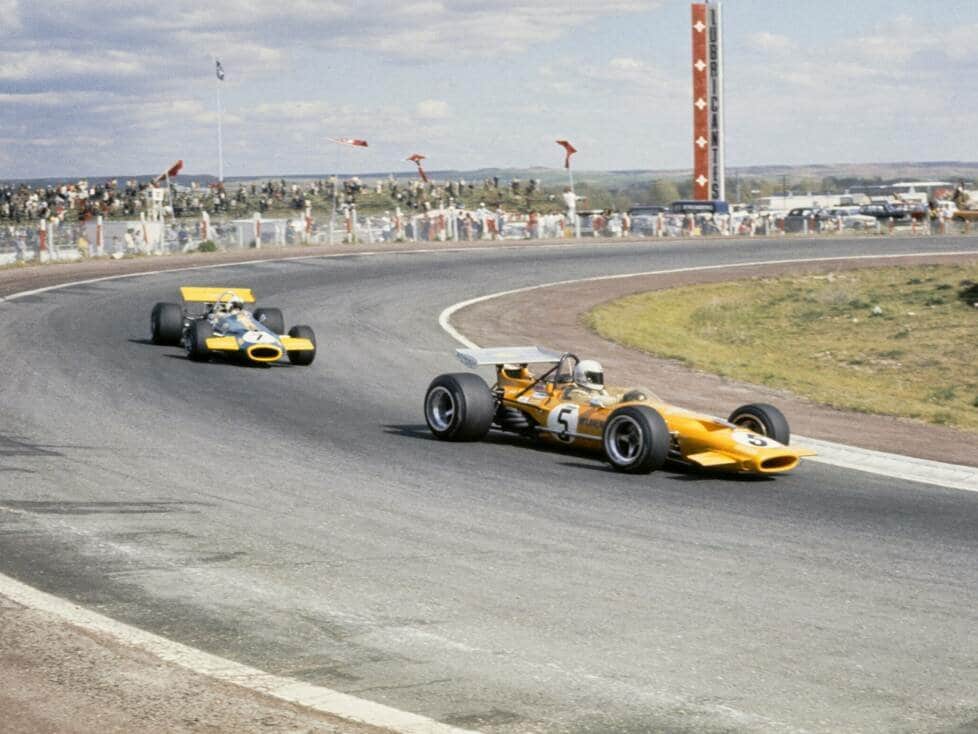From 2026, Formula 1 will make a guest appearance in Madrid, but the Spanish capital and the premier class already have a rich history through the races in Jarama
Formula 1 may never have raced on the streets of Madrid, but the Spanish capital is not completely foreign to the series. To mark the inclusion of the new venue in the racing calendar from the 2026 season, we take a look back at the history of the premier class in the region
The Jarama circuit, located in the municipality of Madrid but around 30 kilometers from the city, was inaugurated in 1967. After a demonstration race in November, the winding, 3.404-kilometre circuit hosted its first proper Formula 1 Grand Prix on May 12, 1968.
Chris Amon put his Ferrari on pole position and seemed to be on course for victory until a fuel pump failure forced him to retire on the 57th of 90 laps. Graham Hill, who had started the race from seventh on the grid, took first place and gave Lotus the win.
After this first successful edition, however, Formula 1 began to swap Jarama for the Montjuic Circuit in Barcelona. The Spanish Grand Prix was held on this circuit in 1969, 1971 and 1973, until a fatal accident at the 1975 race ended Montjuic’s stay on the calendar.
Jarama hosted the Spanish Grand Prix for the second time in 1970. But the event descended into chaos when it came to the number of participants admitted to the race and whether or not the results of the practice and qualifying sessions would count towards the starting grid.
At the time, drivers lined up on the grid without knowing whether they had qualified or not, and eventually only 16 cars were allowed to start, with drivers such as Jo Siffert being forcibly ejected from the grid.
There was no end to the drama when Jackie Oliver crashed into Jacky Ickx’s Ferrari on the first lap of the race and both cars burst into flames. Ickx escaped with a scare after a steward and a member of the Guardia Civil helped the Belgian to free himself from the burning car
Niki Lauda’s first victory
Emerson Fittipaldi took his second Formula 1 victory in Jarama in 1972, in a rainy Monday race. But perhaps the most historic edition took place in 1974.
In a race that lasted two hours in the rain, Ferrari’s Niki Lauda put in a brilliant performance from pole position. He won his first Formula 1 Grand Prix victory and gave Ferrari its 50th win in the premier class.
Two years later, Lauda arrived at the race with three broken ribs after a tractor accident on his farm in Salzburg. He nevertheless qualified second behind title rival James Hunt. A retirement of Hunt’s team-mate Jochen Mass ensured that the finishing order remained unchanged.
Hunt was disqualified for technical reasons. However, he was reinstated as the winner two months later following a lengthy appeal process.
Double victories for Mario Andretti and Lotus in 1977 and 1978 were followed by Patrick Depaillier’s triumph with Ligier in 1079. It marked perhaps the last quiet edition of the Spanish Grand Prix in Jarama.
FISA against FOCA
The 1980 race took place at the height of the war between FISA and FOCA, a long-simmering dispute between the governing body led by Jean-Marie Balestre and the group of constructors led by Bernie Ecclestone, which came to a head in Spain.
At the time, Balestre imposed heavy fines on drivers who failed to attend safety meetings. When he demanded that all outstanding fines be paid so that the race could take place, the Spanish automobile club RACE offered to pay them in advance in order to save his race.
However, no compromise was reached and RACE took control of its event. The race took place outside the FISA auspices. The FISA-backed teams Ferrari, Renault and Alfa Romeo did not take part.
The twelve remaining teams affiliated to FOCA contested a race without points, which was won by Williams driver Alan Jones.
The 1981 Spanish Grand Prix was the last race in Jarama. It was a spectacle in which Gilles Villeneuve fought tooth and nail against Jacques Laffite to celebrate his last Formula 1 victory. Only 0.220 seconds separated him and his French rival at the finish line.
From a commercial point of view, however, the Grand Prix was a failure. Due to high ticket prices and a bomb threat from the terrorist group ETA, only 25,000 fans attended.
Two years later, Lauda traveled to the race with three broken ribs after a tractor accident on his farm in Salzburg. He nevertheless qualified second behind title rival James Hunt. A retirement of Hunt’s team-mate Jochen Mass ensured that the finishing order remained unchanged.
Hunt was disqualified for technical reasons. However, he was reinstated as the winner two months later following a lengthy appeal process.
Double victories for Mario Andretti and Lotus in 1977 and 1978 were followed by Patrick Depaillier’s triumph with Ligier in 1079. It marked perhaps the last quiet edition of the Spanish Grand Prix in Jarama.





